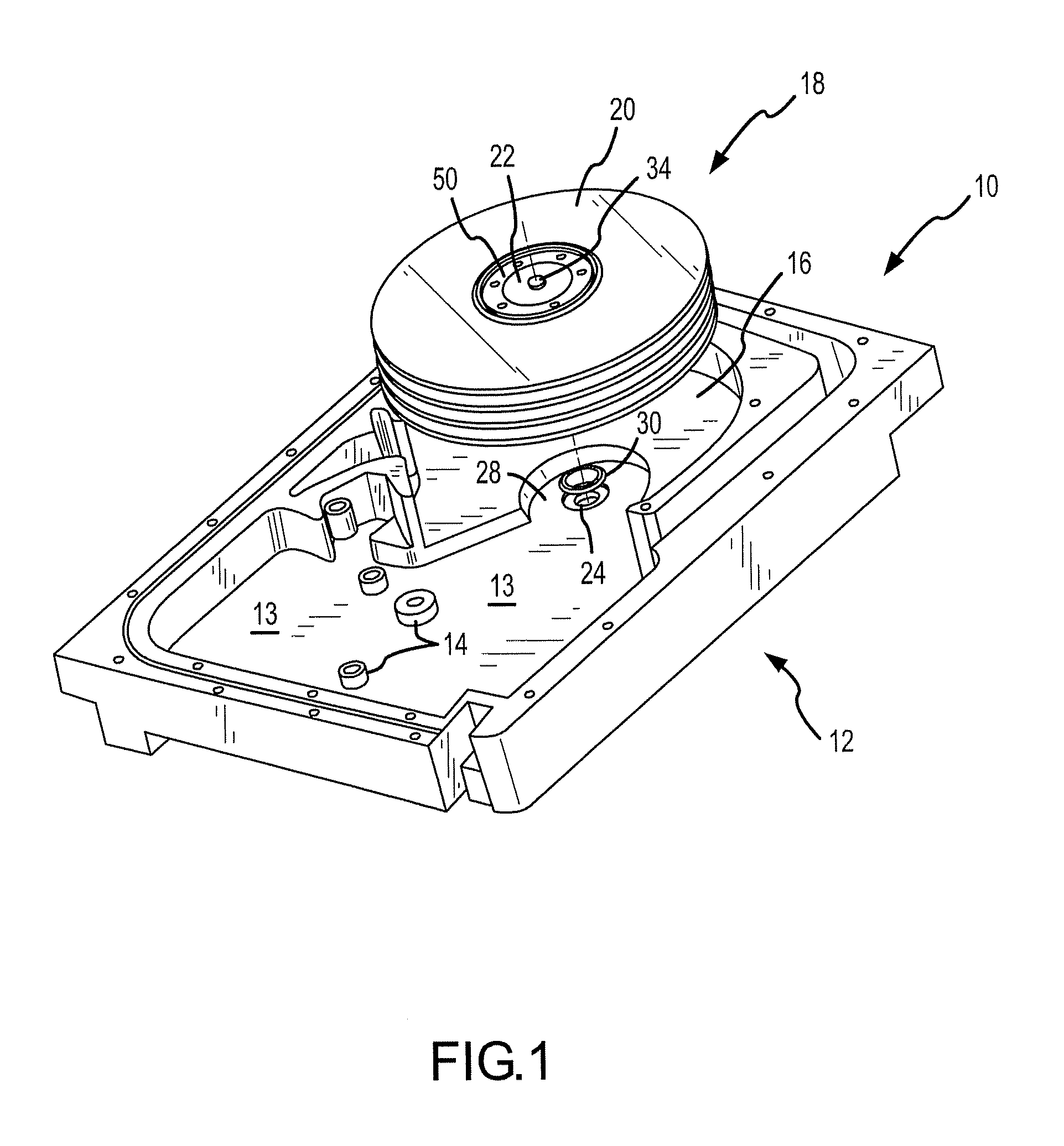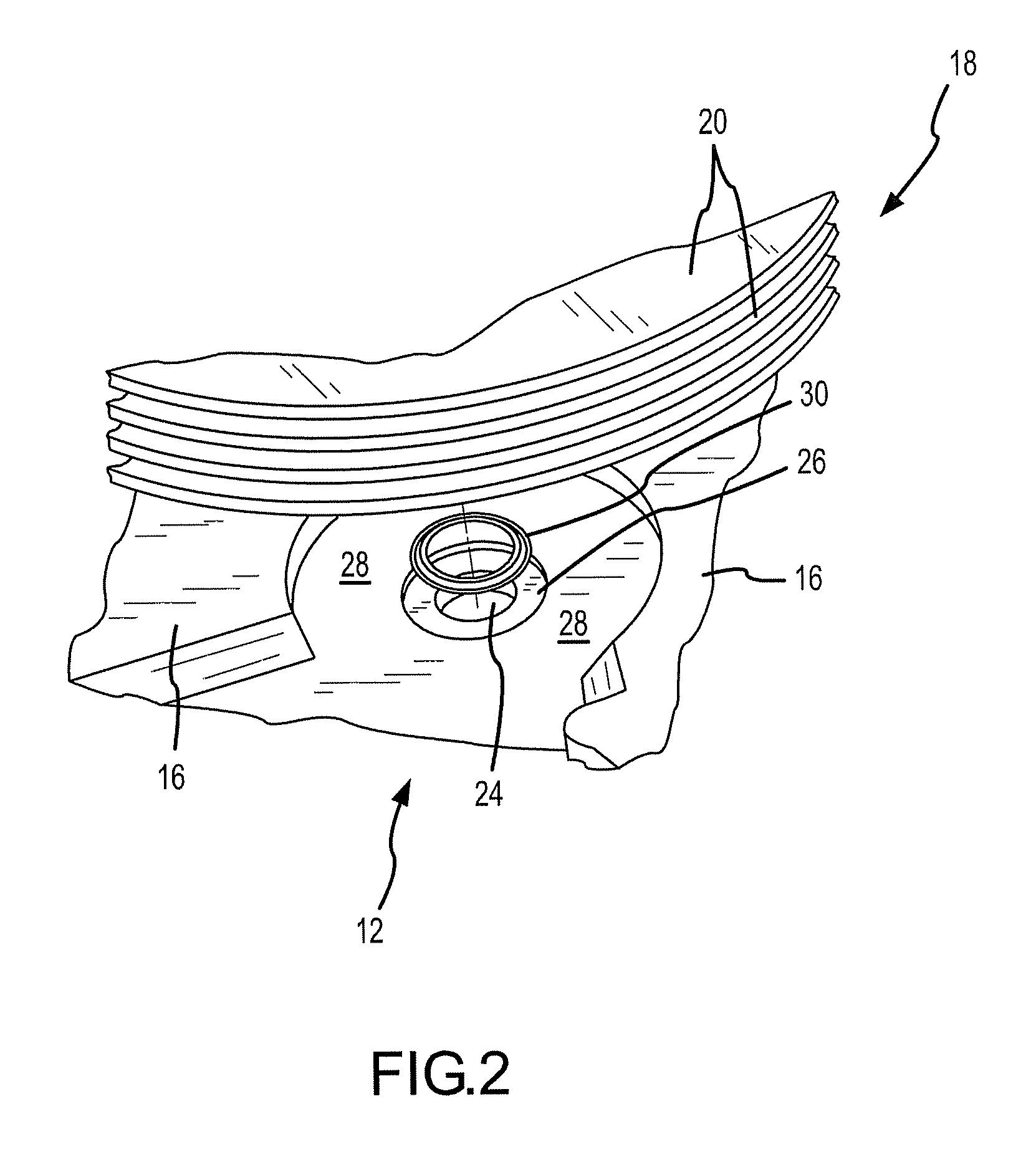Hermetic seal for discrete opening in disk drive housing
a disk drive and discrete sealing technology, which is applied in the direction of casings/cabinets/drawers, instruments, casings/cabinets/drawers details, etc., can solve the problems of affecting the registration of the read/write element relative to the track, increasing the difficulty of the read/write head to accurately read and write information to and from the narrowing track, and increasing the difficulty of maintaining the read/write element over the track at the optimal position for accurate data transfer
- Summary
- Abstract
- Description
- Claims
- Application Information
AI Technical Summary
Benefits of technology
Problems solved by technology
Method used
Image
Examples
Embodiment Construction
[0022]FIG. 1 illustrates one part of the housing assembly 10 of a disk drive, namely, the base plate 12. As shown, the base plate is a rectangular-shaped member having an interior portion thereof that forms a cavity 13 to house the components of the disk drive. Additionally, various protruding features 14 may be found within the cavity 13 of the base plate 12 to accommodate attachment of the components of the disk drive. One portion 16 of the cavity 13 includes an area to receive a disk pack 18. The disk pack 18 may include a plurality of data disks 20 stacked over a hub 22, and a disk clamp 50 (also see FIG. 5) is secured over an upper end of the hub 22.
[0023]As shown in FIG. 2, the base plate 12 may include an opening 24 that receives the spindle shaft 32 (FIG. 3). Directly adjacent the opening 24 and formed concentrically around the opening is a recess 26. The exposed surface of the cavity 13 around the recess 26 is shown as surface 28.
[0024]Referring specifically to FIG. 3, the ...
PUM
| Property | Measurement | Unit |
|---|---|---|
| diameter | aaaaa | aaaaa |
| temperature | aaaaa | aaaaa |
| temperature | aaaaa | aaaaa |
Abstract
Description
Claims
Application Information
 Login to View More
Login to View More - R&D
- Intellectual Property
- Life Sciences
- Materials
- Tech Scout
- Unparalleled Data Quality
- Higher Quality Content
- 60% Fewer Hallucinations
Browse by: Latest US Patents, China's latest patents, Technical Efficacy Thesaurus, Application Domain, Technology Topic, Popular Technical Reports.
© 2025 PatSnap. All rights reserved.Legal|Privacy policy|Modern Slavery Act Transparency Statement|Sitemap|About US| Contact US: help@patsnap.com



